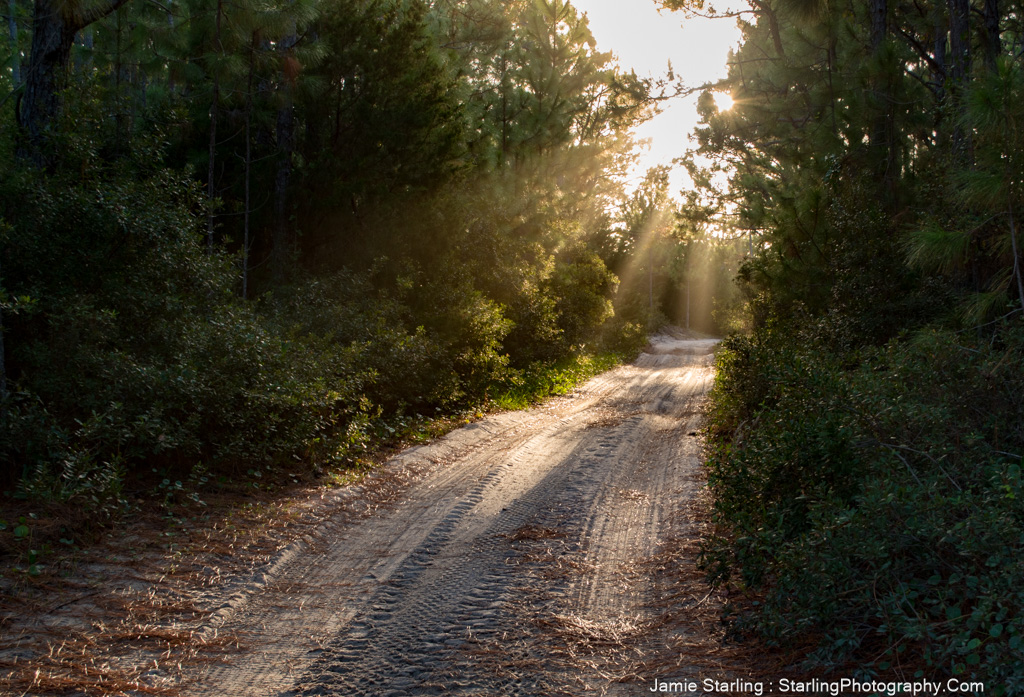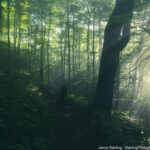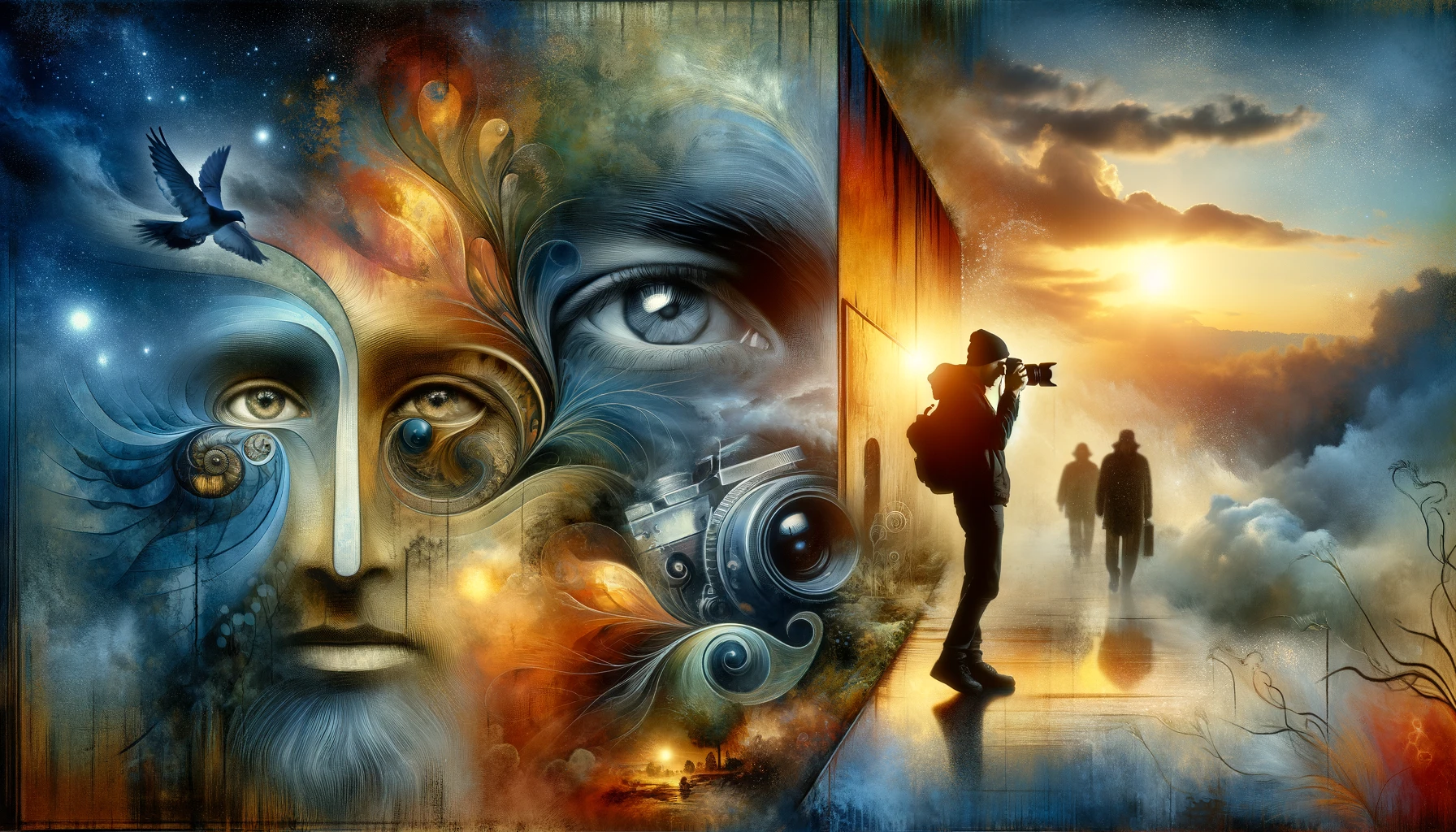
Showing the Journey
How to Use Photography to Tell Stories
The photograph of a sunlit path winding through the forest is more than just a scene; it’s a visual story that invites us to explore the journey ahead, filled with light, shadows, and the echoes of those who walked before us.
Visual Intervention Received : 2017 – Cape Lookout, North Carolina
The Art of Storytelling Through Photography: Receiving Moments That Matter
Photography is often seen as a way to freeze time, capturing a single moment in its entirety. But when we approach photography as a form of storytelling, it becomes so much more than that. It transforms into a powerful tool for conveying emotions, conveying narratives, and connecting with others on a deep, personal level. A well-composed photograph can tell a story that words might struggle to express, inviting viewers into a moment that transcends the mere visual.
Crafting a Narrative Within a Single Frame
Storytelling in photography is an art, one that requires us to think beyond just the technical aspects of taking a picture. It asks us to consider the composition, the subject matter, and the intention behind every element we include—or choose to exclude—within the frame.
Take, for instance, the photograph of the sunlit path winding through a dense forest. On the surface, it’s a simple image of a dirt road surrounded by trees. But when we look closer, it reveals much more. The light filtering through the trees and casting long shadows across the path adds a sense of warmth and direction, suggesting a journey—a path forward that is both inviting and mysterious. The road itself, marked by tire tracks, hints at those who have traveled before, adding layers of history and continuity to the scene.
Every element in this photograph contributes to the story it tells. The dense foliage on either side of the path creates a sense of intimacy, as if the road is a hidden passage known only to a few. The interplay of light and shadow evokes feelings of hope and contemplation, making us wonder where the path leads and what lies beyond the bend.
Visual Intervention
In this photograph, the path serves as a powerful symbol of life‘s journey—one that is often full of twists and turns, light and shadow. The light streaming through the trees symbolizes guidance, illuminating the way forward even when the destination is not entirely clear. The tire tracks on the road remind us that others have walked this path before, each leaving their mark, each contributing to the story of this place.
This image is a perfect example of how a photograph can go beyond being just a visual record. It captures a moment that speaks to something universal—a journey, a quest for direction, and the beauty of discovering the path as we walk it. The photograph invites viewers not just to see the road, but to feel the emotions it evokes and to imagine the stories it holds.
Reflections
As you consider this concept of storytelling through photography, reflect on the following questions:
- What stories do you find yourself drawn to in your photography? How do you convey those narratives through your images?
- Think about a photograph that has had a significant impact on you. What was it about that image that resonated with you? What story did it tell?
- How can you use composition and light to enhance the narrative within your photographs? What elements do you include to guide the viewer’s eye and emotions?
- When you look at a scene, how do you decide which parts of the story to focus on and which to leave out? How does this choice affect the overall narrative of your image?
- How does the concept of a journey, as symbolized by the path in the photograph, relate to your own creative or personal journey? What stories are you hoping to tell through your art?
By engaging with these questions, you open yourself to a deeper understanding of how photography can be a medium for storytelling. It encourages you to approach your work with intention, to see each frame as an opportunity to communicate something meaningful, and to connect with your audience on a more profound level.
Photography Beyond What We See
Photography, at its core, is about more than just capturing what we see. It’s about sharing stories, evoking emotions, and creating connections. The sunlit path in the photograph symbolizes not just a journey, but the potential of every photograph to take viewers on a journey of their own. Whether you’re capturing a serene landscape, a bustling street scene, or a quiet moment in nature, remember that each image has the power to tell a story that resonates far beyond the frame.
As you continue to explore photography as a form of storytelling, embrace the moments that matter, the ones that speak to something deeper within you. Let your camera be not just a tool for taking pictures, but a means of sharing your unique perspective, your journey, and your stories with the world.ity to slow down, to see with fresh eyes, and to embrace the richness of life’s unfiltered reality.
Join the Journey : Sign Up for My Newsletter
Are you on a journey of self-discovery and spiritual exploration? Do you seek insights and practical wisdom to transform your life and deepen your understanding of the world? Join the Conscious Change Collective Community by signing up for my newsletter!
I am not sure where this journey will take us, but for now, you will receive a daily digest of my blog posts. Let’s explore the path of conscious change together!
I’m also open to connecting through podcasts, interviews, or just having meaningful conversations. If you’re interested in diving deeper into these topics or collaborating in any way, feel free to reach out. Let’s walk this path together in whichever way resonates most.
Email : jamie@starlingphotography.com









